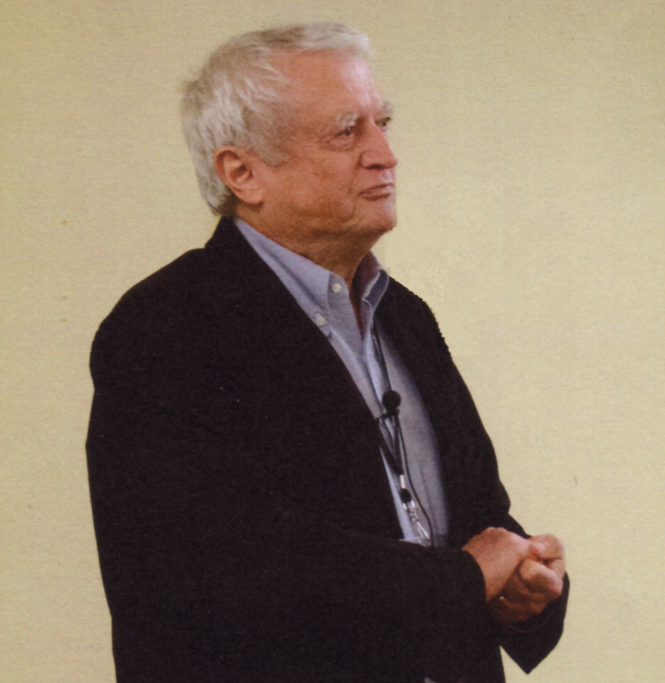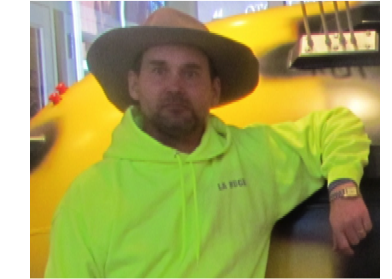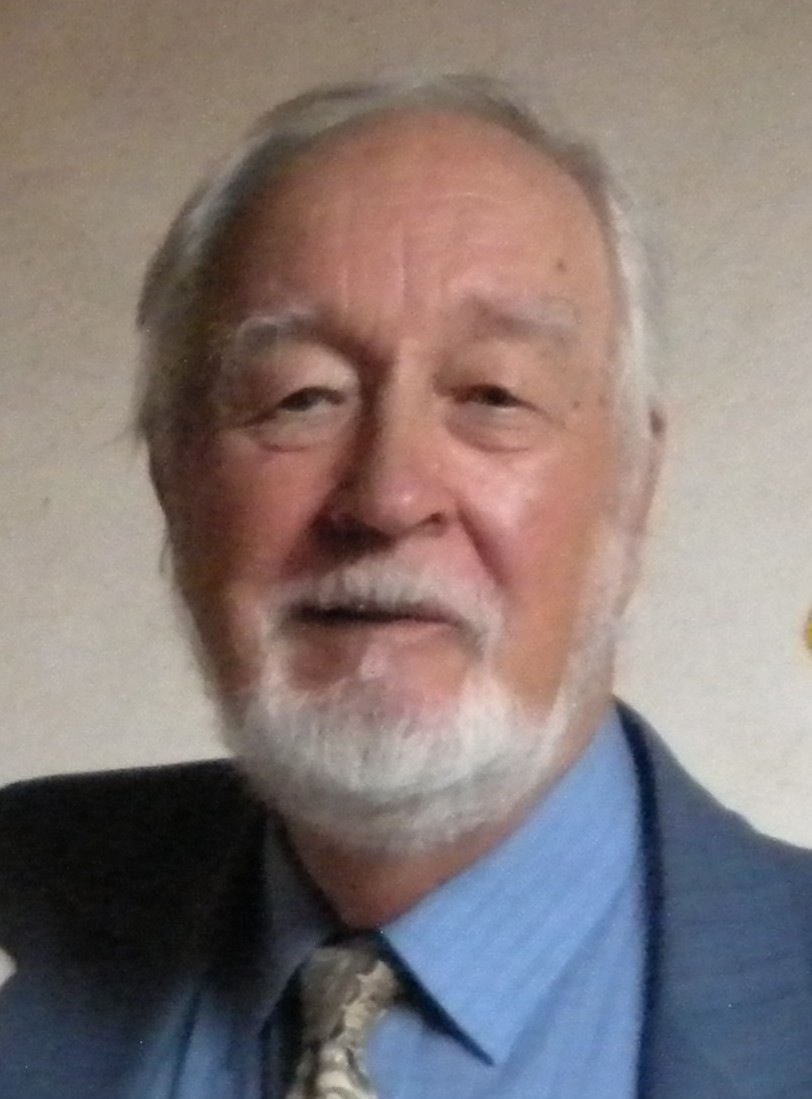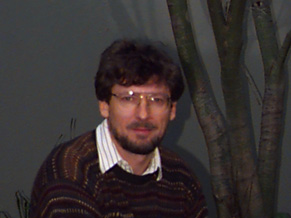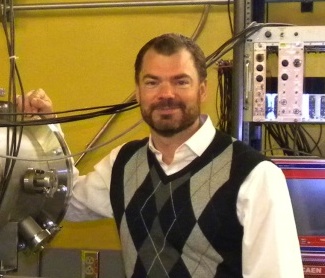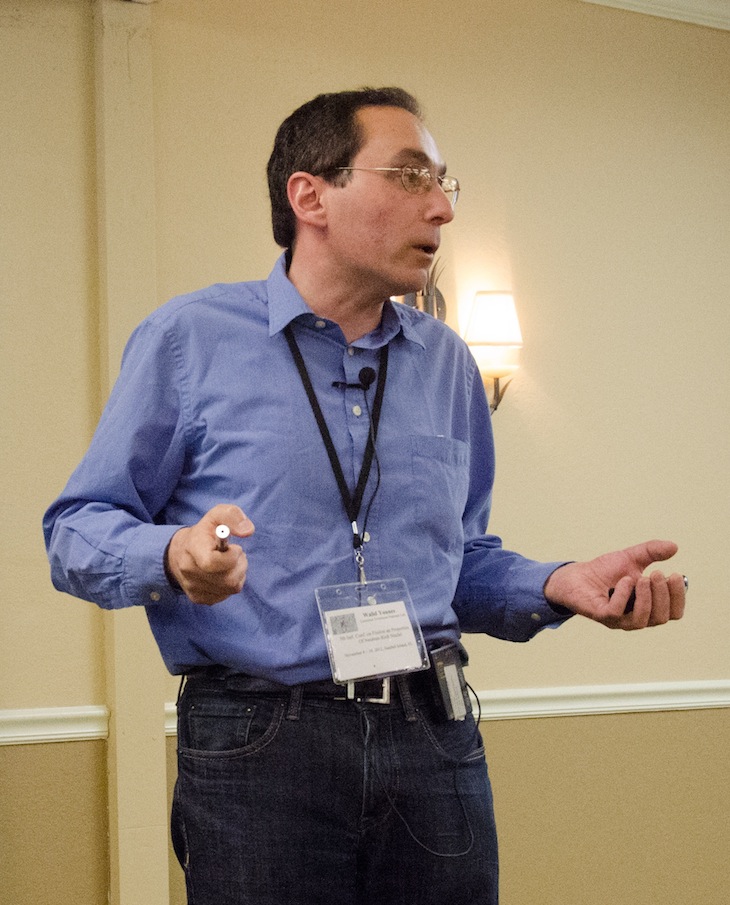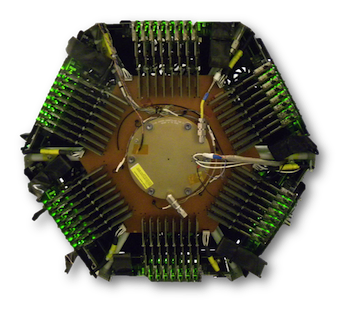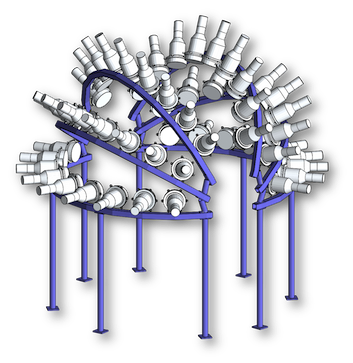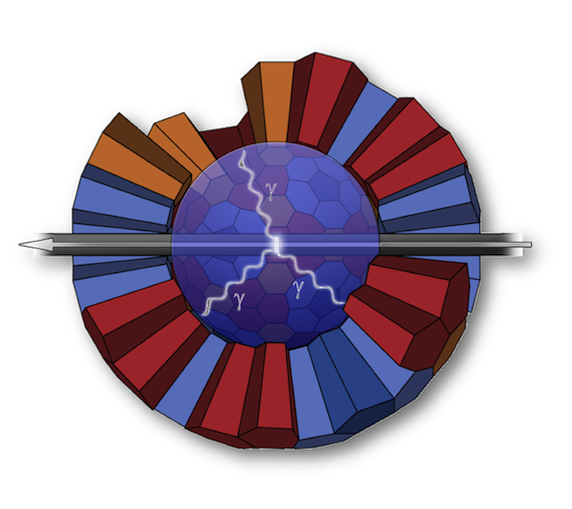School
The school lasted for two days. One-and-a-half days was devoted to lectures, followed by a half-day visit of LANSCE experimental facilities focusing on nuclear fission studies.
The school lecturers are:
- Dr. Forrest B. Brown, Los Alamos National Laboratory, USA
- Prof. Dr. Friedrich Gönnenwein, Tuebingen University, Germany
- Dr. John P. Lestone, Los Alamos National Laboratory, USA
- Dr. J. Eric Lynn, Los Alamos National Laboratory, USA
- Dr. Jørgen Randrup, Lawrence Berkeley National Laboratory, USA
- Dr. Fredrik Tovesson, Los Alamos National Laboratory, USA
- Dr. Walid Younes, Lawrence Livermore National Laboratory, USA
A short description about those lectures as well as information on the lecturers is given below.
The school agenda can be downloaded here.
Lecture slides and notes are now available online (see below).
- Fission Shape Dynamics, Jørgen Randrup, LBNL [slides] [notes] (updated as of 09/17/14)
- A Microscopic Theory of Fission, Walid Younes, LLNL [slides] [slides and notes]
- Fission Cross Section Theory, J. Eric Lynn, LANL [slides] [slides and notes]
- Neutron and Gamma Emission in Fission, Friedrich Gönnenwein, University of Tübingen [slides and notes]
- Fission Experiments, Fredrik Tovesson, LANL [slides] [notes]
- Nuclear Fission in Transport Code Simulations, Forrest Brown, LANL [slides]
- The Importance of Nuclear Fission Data to Various Applications, John Lestone, LANL [slides] (updated as of 09/26/14)
F. B. Brown
Nuclear Fission in Transport Code Simulations
Monte Carlo computer codes have been used to simulate neutron transport in fissionable materials since the late 1940s. Today’s MC codes such as MCNP6 can accurately model nearly any geometry and make use of detailed physics interaction data from the ENDF/B-VII libraries. For many applications today, many billions of neutrons are simulated using MC methods on parallel computers. While MC methods for neutron transport can be viewed in practical terms (i.e., just simulate particle behavior), there is a solid mathematical and physical basis founded in the linear Boltzmann transport equation. This lecture provides an overview of MC methods for simulating particle transport, with particular emphasis on the fundamental assumptions in the underlying equations and transport and collision modeling. Depending on the application, some portions of the simulations may use expected-value outcomes, while other portions require detailed modeling that conserves energy, momentum, particles, correlations, etc. Static eigenvalue calculations are compared with fixed-source time dependent approaches, and the detailed modeling of fission processes in MCNP is reviewed.
F. Goennenwein
Neutron and Gamma Emission in Fission
Neutrons and gammas are exhausting the excitation energies of primary fragments from fission. In the standard 235U(nth,f) reaction neutrons carry away about 17 MeV of energy leaving about 8 MeV for the gammas. Emission times, energy spectra and multiplicities are discussed for both, prompt neutrons and prompt gammas. Attention is given to the saw tooth of multiplicities as a function of fragment mass disclosing that deformations at scission and the resulting excitation energies are not equally partitioned between fragments. The existence of scission neutrons and their sources are discussed and confronted to anisotropic neutron emission in the c.m. of fragments. Following the emission of prompt neutrons and gammas the secondary fragments called fission products are in their ground states. However, fission products are in general unstable and undergo beta-decay. In these decays, besides anti-neutrinos, delayed gammas and neutrons are emitted. The importance of delayed neutrons for reactor control is highlighted.
J. P. Lestone
The Importance of Nuclear Fission Data to Various Applications
The importance of fission cross sections, mean neutron and gamma-ray multiplicities, multiplicity distributions, fission neutron and gamma-ray energy spectra, fragment yield curves, delayed emission from fragments, fragment-neutron, neutron-neutron, and gamma-gamma correlations, will be discussed. In particular, their importance to time scales of sub- and super-critical systems; initiation of fission chains in sub- and super-critical systems; measurement and accounting of special nuclear material at nuclear facilities; detection of special nuclear material at ports and border crossings; accurate determination of prompt fission neutron spectra from accelerator based experiments; and yield assessments from explosions. The nuclear-data community has a long history of providing data of great importance to applied programs. A few cases where applied programs have generated data nuclear will be discussed.
J. E. Lynn
Fission Cross Section Theory
The two lectures on this topic start with an overview of classical liquid drop theory and the essentials of quantal transition of a charged liquid drop with internal modes of excitation through or over a single potential energy barrier in deformation space. It is then shown how these physical concepts are brought into formal nuclear reaction theory (R-matrix theory) and how additional concepts such as barrier transition states are required to explain experimental phenomena in fission cross sections. Other difficulties with the liquid drop model, such as inability to explain experimental observations of barrier height magnitude as a function of mass and charge number are described. Striking new fission phenomena that were discovered after about 1960 led to revolution in the theory, leading to the understanding of the importance of nucleon structure (shell) effects even when the nucleus is highly deformed. It is shown how the new barrier properties can be treated within the R-matrix theory, allowing for the existence of intermediate structure as well as fine structure in the fission cross-section, and how this development of the reaction theory can be used as a sound basis for the analysis of fission cross-section data and the calculation of poorly known and unknown cross sections (capture and inelastic as well as fission). Examples of modern analysis of fission reaction data over a series of isotopes and the resulting deductions of the physics of the highly deformed nucleus will be presented.
J. Randrup
Fission Shape Dynamics
These two lectures aim to give an introduction to the theoretical approach to nuclear fission dynamics within the macroscopic-microscopic framework.
The first lecture discusses the general features, including the concept of shape degrees of freedom and the formal framework for their dynamical evolution. It will also go over the most common treatments of the two-part potential energy, the mass tensor for the shape motion and the associated dissipation tensor.
The second lecture focuses on recent advances in the treatment of the nuclear shape evolution during fission, in particular the special simplifications that arise when the dissipation is strong and which make it possible to obtain useful predictions for the fission fragment mass distributions for essentially any case of interest without a need for additional parameters.
F. Tovesson
Fission Experiments
Fission experiments have been conducted for over 70 years, ever since Otto Frisch first identified signals from fission fragments in a gas ionization chamber and thus confirmed the newly discovered fission process. There are many aspects of fission that need to be understood to form a complete picture: cross sections, fragment yields, kinetic energy release, prompt neutron and gamma emission, etc. In order to study all these aspects a vast spectrum of experimental techniques has been developed. This lecture will provide an overview of the most common techniques and detectors used to study fission. Fragment detectors such as ionization chambers, surface barrier detectors, and velocity spectrometers will be described, as well as prompt and delayed neutron and gamma-ray detection techniques. The types of facilities commonly used in induced-fission experiments will also be included. Finally I will discuss the most recent developments in fission research in terms of state-of-the-art detectors and experimental facilities.
W. Younes
A Microscopic Theory of Fission
With the advent of modern parallel computers and powerful theoretical methods, fission calculations within a consistent microscopic framework starting from protons, neutrons and an effective interaction between them are beginning to produce useful nuclear data. At the same time, nuclear fission remains a daunting challenge and a unique testbed to develop our understanding of the nuclear many-body problem. In the first part of this course, I will discuss the basic foundations of a microscopic approach to nuclear physics and introduce the powerful combination of the Hartree-Fock-Bogoliubov approximation and the Generator Coordinate Method to construct a collective Hamiltonian from the underlying single-particle degrees of freedom. In the second part, I will apply this formalism to the calculation of fission-fragment properties (e.g., kinetic and excitation energies, yields) and discuss the use of microscopic methods in nuclear data evaluations, and future developments in this area of research.
[ LLNL-ABS-653739 ]
Visit to LANSCE Experimental Facilities
The themes addressed during these lectures are aligned with current experimental and theoretical efforts at LANL. A half-day will be devoted to a visit of the Los Alamos Neutron Science Center (LANSCE), and in particular the following experimental setups:
Time-Projection Chamber (TPC)
Based on technology employed in high-energy physics research, the fissionTPC reconstructs 3-D representation of particle tracks. Built for high-precision fission cross-section measurements, the fissionTPC will ultimately be used in many neutron-induced reaction studies.
SPIDER spectrometer
High-resolution measurements of fission fragment yields as a function of A, Z, incident En , and total kinetic energy. Uses “2E-2V” method – MCPs for fast timing/velocity component, axial ionization chambers for energy. LDRD-DR funded – completion in FY14
Chi-Nu array
Neutron emission spectra are measured by the so-called Chi-Nu array of neutron detectors surrounding a sample in the beam. Prompt fission neutrons are measured with a fission chamber in the beam. Neutron emission from inelastic scattering can also be measured. The neutron detectors are liquid scintillators for neutrons above 500 keV and 6Li-glass detectors for lower energy neutrons.
DANCE calorimeter
The Detector for Advanced Neutron Capture Experiments (DANCE) is an array of 160 BaF2 scintillation detectors arranged in a 4π geometry. A unique combination of high neutron flux, gamma ray detection efficiency and high granularity of DANCE enables high precision measurements of neutron capture on variety of samples, including short-lived isotopes. Fast fission fragment detectors can be placed in the center of DANCE to measure properties of prompt fission gamma rays and their correlations.


